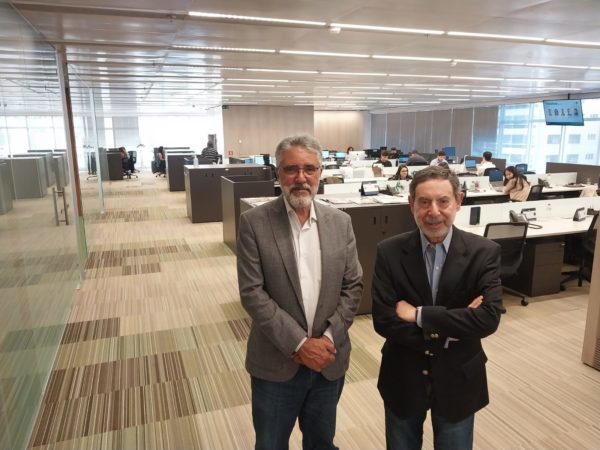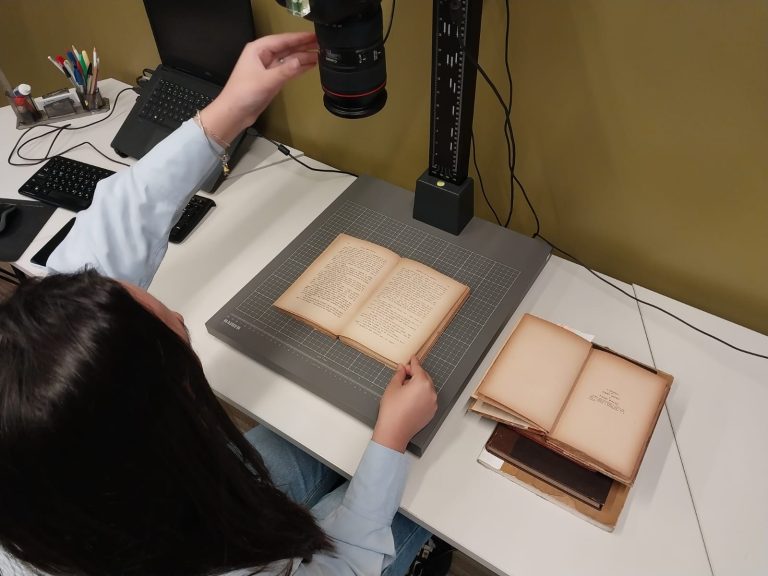São Paulo – Research in a new collection has given rise to findings about the Arab immigration to Brazil, even changing parts of the previously known documenteded history on the subject. Who was the first Arab immigrant living in Brazil and what was the first Arabic newspaper published in Latin America are some of the unveilings from the archive of the Project of Digitization of the Memory of the Arab Immigration to Brazil.

The project made available for consultation in March last year a digitized collection of 100,000 pieces, including book pages, magazines, journals and photos produced by immigrants in their first years since their arrival in Brazil. The archive that gives access to information from that period has 120,000 digitized materials and has become a source for researchers, who shed a new light on the immigration facts.
The collection has been used by researchers in Brazil, Argentina, Chile, Lebanon and Europe, according to Brazilian historian Roberto Khatlab, director of the Latin American Studies and Cultures Center (LASCC) of the Holy Spirit University of Kaslik (USEK), and Silvia Antibas, vice president of Communications & Marketing of the Arab Brazilian Chamber of Commerce (ABCC). The two institutions are responsible for the project.

According to Khatlab, most researchers that use the archive are PhD and post-doctoral students. Topics searched include the movement of opposition to the Ottoman Empire that ruled Lebanon at the time of the immigration to Brazil. Since it was forbidden in the Arab country, immigrant scholars wrote about the topic on Brazilian soil, where they lived, and sent their writings to newspapers in the Arab country.
Many of these journals were eventually barred from entering Lebanon. “Now they are searching these old papers on immigration as they contain a lot of history that can’t be found in Lebanon,” he says.
Researchers have also searched the archive for answers on how Arab immigrants lived in Brazil. For instance, a survey has been carried out based on the newspaper ads produced by the community back then. Merchants announced their stores in these journals, and new immigrants found these shop owners to offer to sell their products as peddlers via such ads. “Through the advertising you start to find the families that were well off back then,” says Khatlab.

Khatlab himself has conducted studies based on information from the archive. That’s how he found a document that mentions the name that may belong to the first Arab immigrant to Brazil ever: Joseph Ibrahim Nehmé, who moved to Brazil in 1795. This expands the age of Arab immigration to Brazil to 228 years instead of the previously known 140 years. “Joseph is a landmark, but there can be previous immigrants,” said the historian. Khatlab noted that the Great Immigration did start in the late nineteenth century, though.
Khatlab also says the collection features a copy of what may have been the first Arabic newspaper ever published in Latin America, 1984’s Al-Fayha, Mundo Largo, founded by Salim Iuhana Balich from Zahlé and distributed in Campinas, São Paulo. The previous record was of a newspaper from 1895. “This is a characteristic of History: It changes as original documents are unveiled, and we’re giving access to these original documents,” said Silvia Antibas on the archive.
Access to the archive
The Project of Digitization of the Memory of the Arab Immigration to Brazil knows the topics searched in its collection as one has to contact it to access the Arabic documents. When a study is completed, the project asks the author to send a copy of the book or paper produced, thus generating further material and bringing new findings to light.
The library of USEK, where this material is held, is connected to a global network of libraries, so researchers from around the world, not only Lebanon and Brazil, learn about the content of the collection and request access to it. “All these researchers will bring new findings and fresh perspectives,” says Antibas. USEK professors also use information from the collection for their classes. The university carries out similar projects with other Latin American countries like Argentina, Chile and Mexico.
Digitization continues
The ABCC sees the project as one of its most important sociocultural actions, said its president Osmar Chohfi. “It’s a pioneering project. Much has been written about Syrian and Lebanese immigration, but this memory recovery through the documents we got from Arab Brazilian entities and families provides a fresh perspective on the history of immigration,” he said.
The project keeps digitizing new material about the Arab immigration to Brazil. “Those in possession of the documents keep giving them to us. We aim to gather these documents that are currently scattered across Brazil,” said Khatlab. According to Antibas, the project has been contacted by people from other states like Pernambuco and Rio de Janeiro, not only São Paulo, where most of the work has been concentrated so far.
Those interested in providing journals, magazines, photos and other material can contact the organizers of the project via email at projetousek@ccab.org.br. Researchers, scholars and those interested in accessing the information and materials of the collection can find the contact details below. The information on materials made available for consultation can be found on the link below, too.
Quick facts:
Latin American Collection – Arab Immigration
Holy Spirit University of Kaslik (USEK)
Access the collection
Consultations: reference@usek.edu.lb
Translation by Guilherme Miranda




